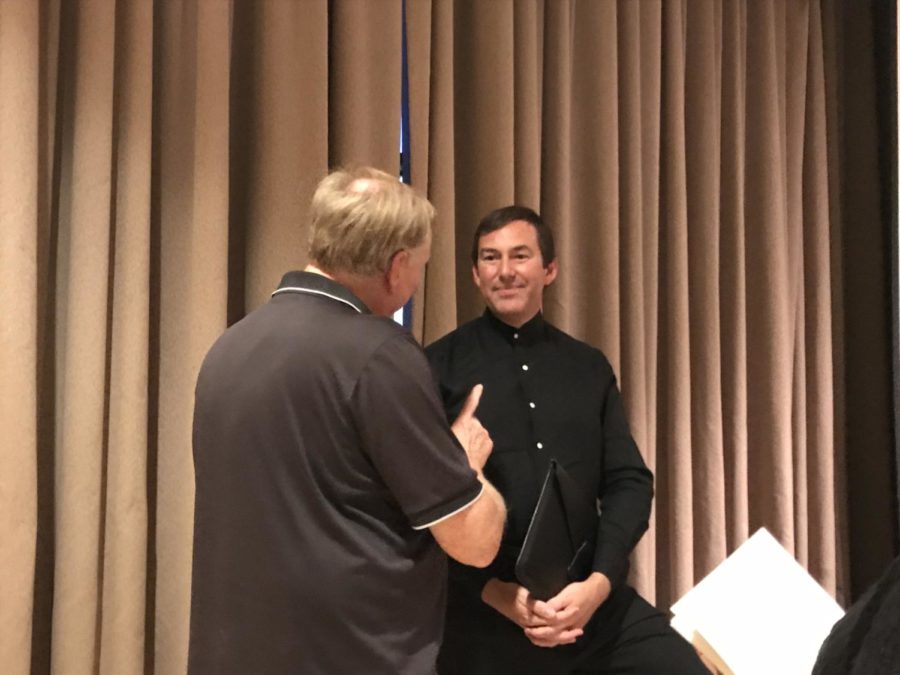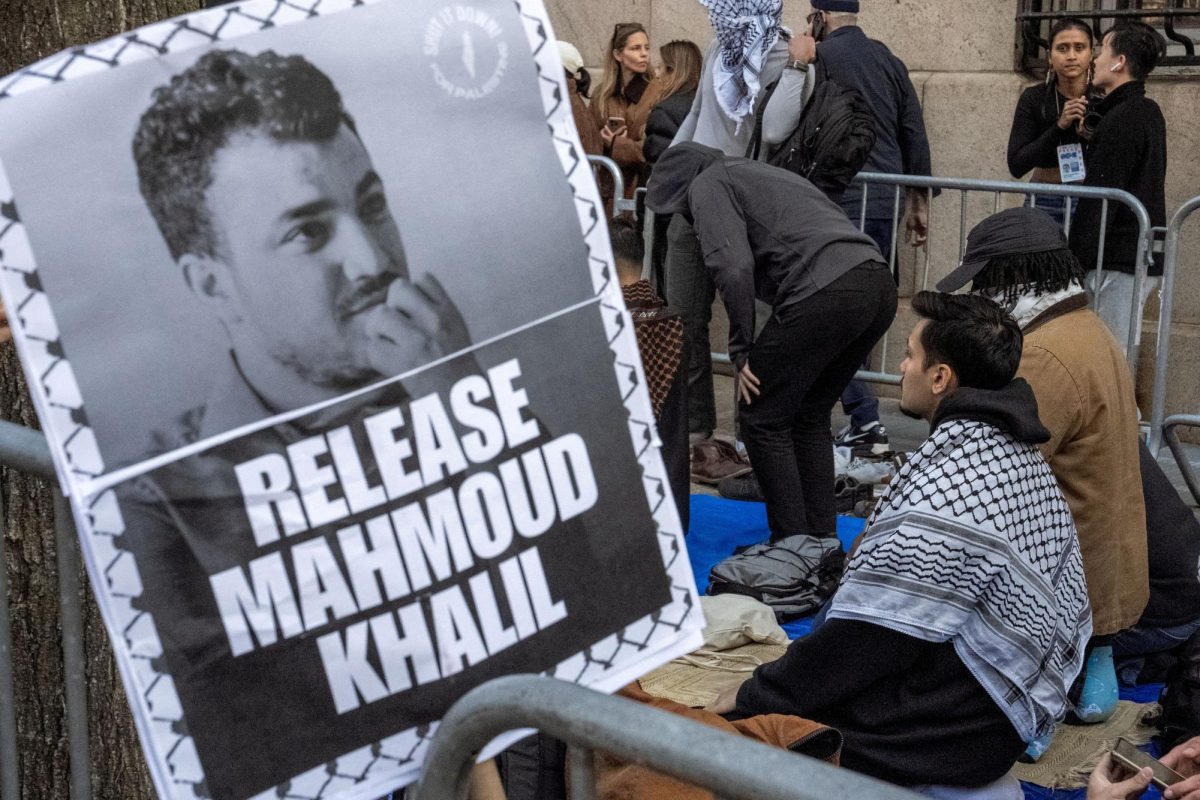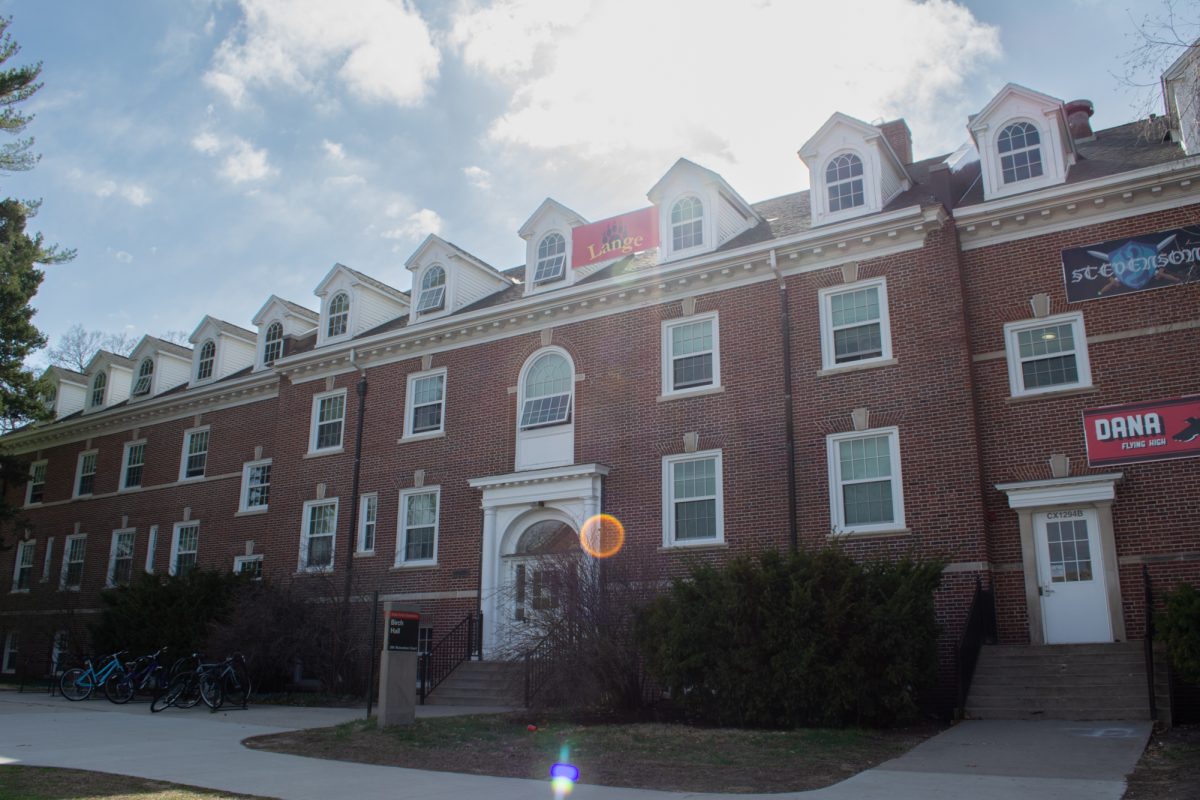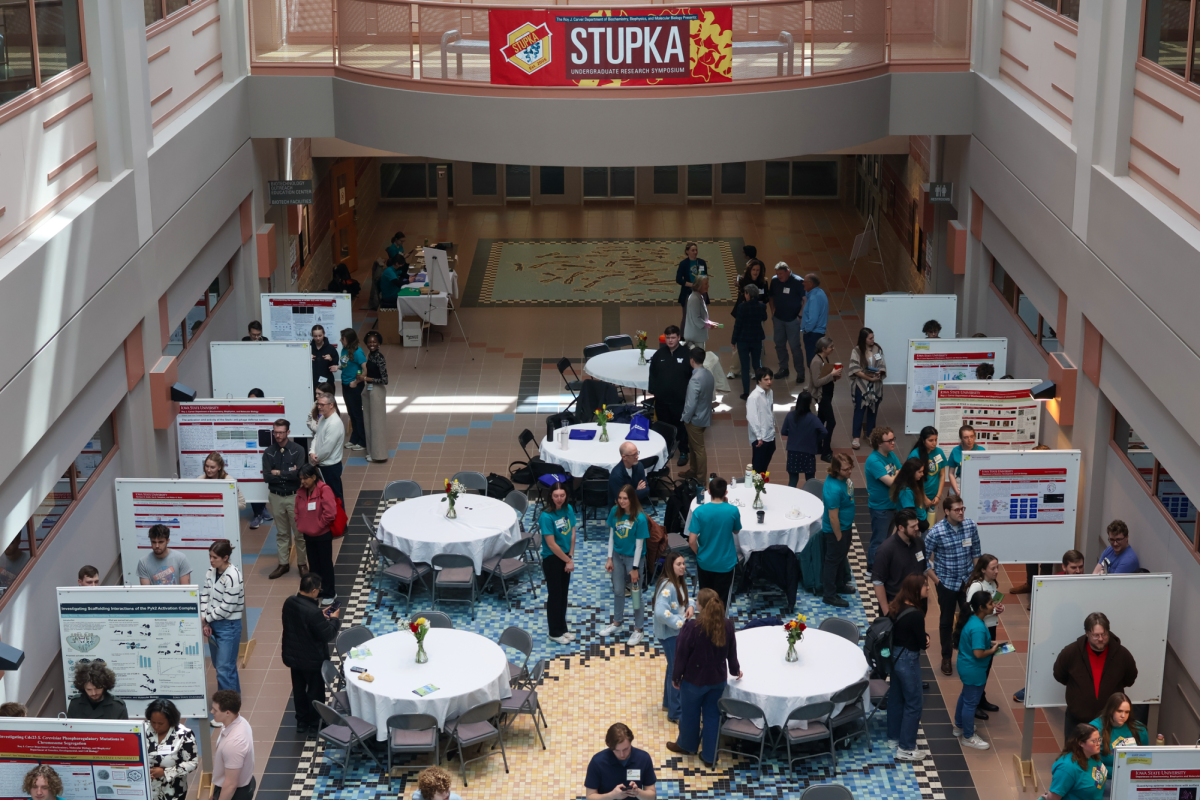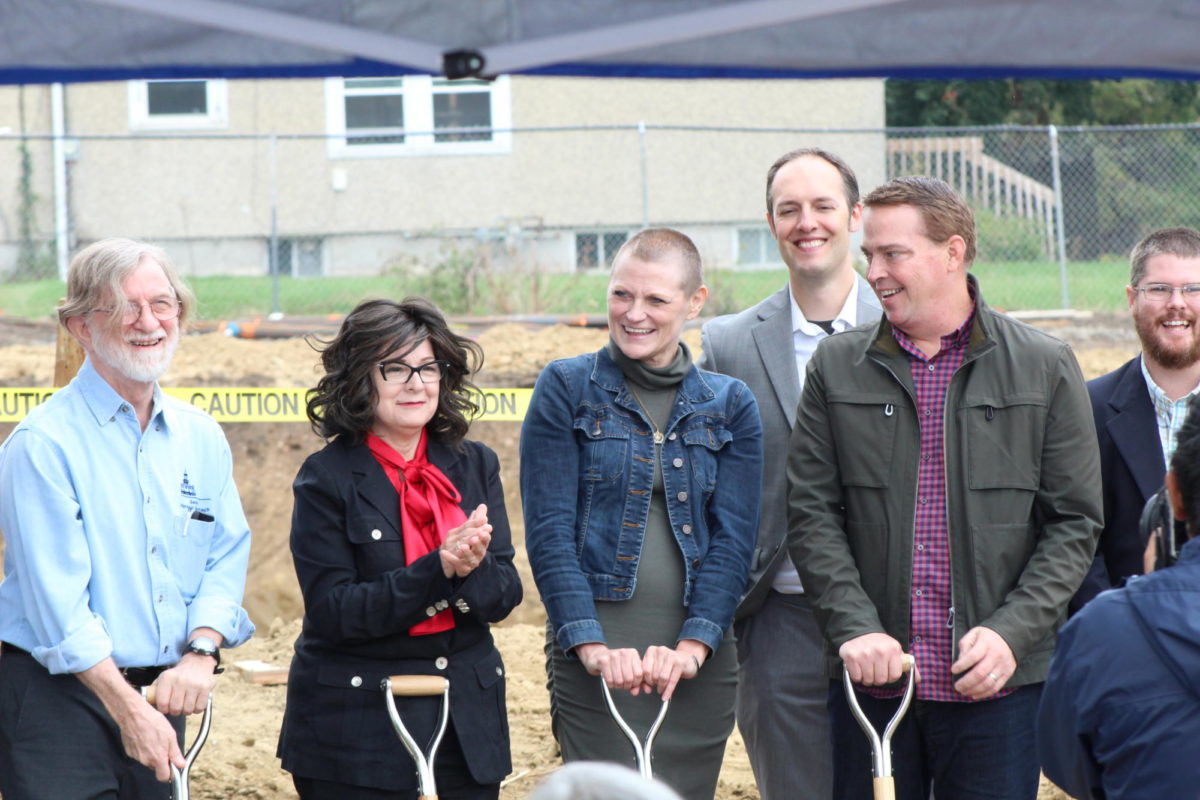Lecturer tells unaddressed history between Islam and Christianity
Michael Penn, professor of religious studies at Stanford University, speaks to an audience member after his lecture in the Memorial Union Sun Room on September 6, 2017.
September 6, 2017
Most people know about the Crusades and the Islamic Empire, but there is more interaction than that between Muslims and Christians throughout history.
Michael Penn, professor of religious studies at Stanford University, spoke in the Memorial Union Wednesday night to talk about his findings in five main texts that elude to a wider history between two widely practiced religions.
“If history matters, then getting right what happened between what would become the world’s two largest religions is really important,” Penn said. “The problem is, I think we have it wrong.”
Penn claimed that the main problem lies in language practice and linguistics. The earliest Christians were from Syria and spoke a dialect of Aramaic called Syriac. However, most historians who study religion know history as told in Latin or Greek.
“I mean honestly, who here can say they even heard of Syriac before this evening,” Penn said.
Penn explained that Aramaic is not a language commonly taught at colleges or universities, and no undergraduate colleges offer it as a course. This leads to a limited range of knowledge derived from original texts.
However, Penn cited five sources from his own research that show true interactions between Muslims and Christians in the centuries following the death of the Islamic prophet Mohammed.
In these earliest meetings, Syriac Christians lived inside the Islamic Empire and impacted it greatly. People in the empire in both religions would marry between faiths, hold public office, translate for one another and more.
“Syriac texts constantly suggest that in the centuries following Mohammed’s death, there is much more crossover than is commonly suggested,” Penn said.
One of these texts studied by Penn is what he calls the “Family Bible” and was written around the year 637 A.D. This Bible contains personal inscriptions by its ancient owner that refer to Mohammad and Islamic society, seemingly suggesting peaceful relations between the two religions.
Another Syriac text, what Penn calls “The Storyteller,” was written circa 860 A.D. The text is a major compilation of stories depicting Christians and Muslims of the time being a helpful community.
One story was about a young Muslim boy who had a terminal illness and was given holy water by a Christian man, instantly curing him. In return, the boy’s father paid off the debts of the Christian’s monastery. Other stories tell Christians how to pray for their Muslim neighbors.
“Does this narrative fit our modern image of these religious peoples?” Penn said. “Many Christians that I’ve met wouldn’t expect a 21st century Muslim to pay of debts of a Christian establishment.”
For John Henjum, sophomore in materials engineering, Penn’s message stuck. Penn’s findings were something he had not previously considered.
“It’s hard to interpret what the meetings between Muslims and Christians really was like,” Henjum said. “[The interactions] really affected both sides, especially the Islamic state.”


